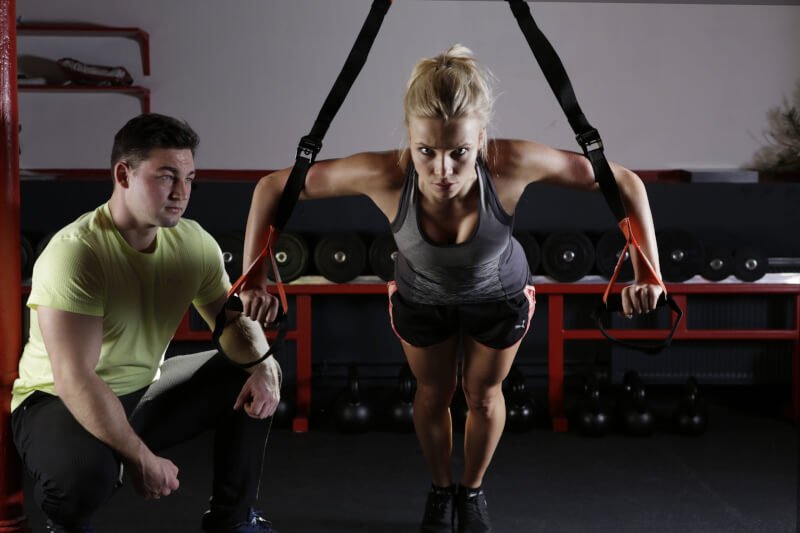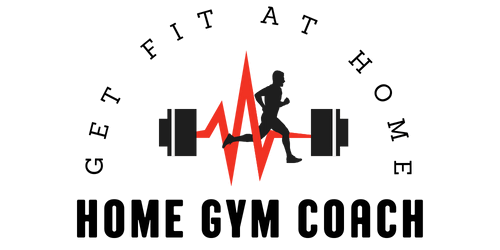Are you tired of generic workout plans that don’t target your specific fitness goals? Look no further! This article introduces custom workout plans designed specifically to help you build core strength. Whether you’re a beginner or a fitness enthusiast, these personalized routines will guide you through the right exercises, reps, and sets to strengthen your core muscles. Get ready to unlock your full potential and achieve a strong and stable core with these customized workout plans!

Benefits of Building Core Strength
When it comes to fitness, building core strength should be a priority for everyone. Not only does it help improve your overall posture, but it also reduces the risk of injury and increases stability and balance. These benefits are not just limited to athletes or fitness enthusiasts, but they can also greatly impact your everyday life. By focusing on your core muscles, you can experience a wide range of physical advantages that will positively affect your body and overall well-being.
Improved Posture
One of the significant benefits of building core strength is improved posture. Your core muscles play a crucial role in supporting your spine and maintaining proper alignment. When your core is weak, it can lead to slouching and poor posture, which can cause discomfort and even chronic pain. By strengthening your core muscles, you can develop a strong and stable torso, helping you maintain an upright posture effortlessly. Good posture not only enhances your physical appearance but also boosts your confidence and overall body awareness.
Reduced Risk of Injury
Another advantage of building core strength is a reduced risk of injury. Whether you’re engaging in sports, daily activities, or even sitting at your desk, a strong core provides stability and support to your entire body. By having a solid foundation, you are less likely to strain or overexert your muscles, reducing the risk of common injuries. Having a stable core also helps distribute your body weight more evenly, preventing undue stress on specific body parts. This can be especially beneficial for those participating in high-impact activities or repetitive movements, as a strong core acts as a protective shield against potential injuries.
Increased Stability and Balance
Core strength is closely tied to stability and balance. Your core muscles are responsible for keeping your body stable during movements, whether you’re performing exercises or going about your daily routine. A strong core helps you maintain balance and control in various positions and situations, thus minimizing the risk of falls and accidents. With improved stability and balance, you can move with confidence and grace, enhancing your athletic performance and reducing the likelihood of tripping or stumbling. Additionally, better stability and balance can be advantageous as you age, as it helps prevent falls and maintains independence in your daily activities.
Understanding the Core Muscles
To effectively build your core strength, it’s crucial to understand the different muscles that make up the core. The core is not just about the abdominal muscles; it involves a complex system of muscles working together to provide stability and support. Here are some key muscles that contribute to core strength:
Rectus Abdominis
The rectus abdominis, commonly known as the “six-pack muscles,” is located on the front of your abdomen. These muscles are responsible for flexing the spine and provide the desired aesthetic appeal associated with a strong core. Strengthening the rectus abdominis can improve posture and contribute to overall core stability.
Obliques
The oblique muscles consist of external and internal obliques and are located on the sides of the abdomen. These muscles help with rotation and lateral flexion of the spine. By strengthening the obliques, you can improve your ability to twist and turn, enhancing your overall athletic performance and functional movement patterns.
Transverse Abdominis
The transverse abdominis is a deep muscle that lies beneath the rectus abdominis. It functions as a natural corset, providing stability and supporting the spine. Strengthening the transverse abdominis is essential for core stability and preventing lower back pain.
Multifidus
The multifidus muscles are located along the spine and play a significant role in stabilizing the vertebral column. These muscles are often neglected but are crucial for maintaining proper posture and spinal alignment. Strengthening the multifidus muscles can enhance core stability and reduce the risk of back injuries.
Erector Spinae
The erector spinae muscles run along the length of the spine and help with spinal extension and rotation. These muscles work in conjunction with the core muscles to provide stability and support during movement. Strengthening the erector spinae helps maintain a healthy spine and contributes to overall core strength.

Determining Your Core Strength Level
Before diving into a custom workout plan, it’s essential to determine your current core strength level. This assessment will help you establish a starting point and track your progress over time. There are two primary methods for assessing core strength: self-assessment and professional assessment.
Self-Assessment
Self-assessment involves performing a series of exercises and evaluating your ability to execute them correctly. These exercises typically target different aspects of core strength, including stability, endurance, and flexibility. By observing your performance and noting any weaknesses or limitations, you can gain insight into your core strength level. Common self-assessment exercises include planks, bridges, and various abdominal exercises.
Professional Assessment
For a more accurate assessment, seeking the help of a fitness professional can provide valuable feedback. Fitness trainers or physical therapists can evaluate your core strength through specialized tests and measurements. They may use tools such as electromyography (EMG) to measure muscle activation or perform functional movement assessments to identify any imbalances or weaknesses. A professional assessment can provide a comprehensive understanding of your core strength and guide your workout plan more effectively.
Designing Your Custom Workout Plan
Once you have determined your core strength level, it’s time to design your custom workout plan. This plan should be tailored to your specific goals, taking into consideration your current abilities and any limitations you may have. Here are some essential steps to help you create an effective and personalized workout plan:
Setting Specific Goals
Before you begin any exercise program, it’s crucial to establish clear and specific goals. Are you looking to improve your posture, enhance athletic performance, or alleviate back pain? Defining your goals will help guide your exercise selection and intensity. Set measurable targets that are realistic and achievable within a given timeframe. By having clear goals in mind, you can stay motivated and track your progress along the way.
Selecting Exercises
To build core strength, it’s important to include a variety of exercises that target different core muscles. A well-rounded routine should incorporate exercises that focus on stability, strength-building, balance, and flexibility. Combining exercises that challenge your core from different angles and positions will provide comprehensive development. Exercises like planks, bird dogs, Russian twists, bridges, v-ups, mountain climbers, and medicine ball exercises can be excellent choices for targeting different core muscles.
Creating a Schedule
Consistency is key when it comes to building core strength. Designing a workout schedule that fits into your lifestyle is essential for long-term success. Determine how many days a week you can commit to your core workout and allocate specific time slots for each session. Be realistic with your schedule and make adjustments as needed. Remember to include rest days to allow your muscles time to recover and adapt. Having a well-structured schedule will help you stay accountable and dedicated to your core strength journey.

1. Warm-up Routine
Before diving into the core exercises, it’s crucial to prioritize a proper warm-up routine. A warm-up prepares your body for the upcoming physical activity, increasing blood flow to the muscles and improving joint mobility. It also helps prevent injuries and enhances your overall performance. Here are some essential components of an effective warm-up routine:
Importance of Warm-up
A warm-up serves as a transition between rest and exercise. It gradually increases your heart rate and warms up your muscles, preparing them for more intense activity. A proper warm-up also activates the nervous system and mentally prepares you for the workout ahead. By elevating your body temperature, you can improve muscle elasticity and reduce the risk of strains or tears.
Dynamic Stretching Exercises
Dynamic stretching is highly effective during a warm-up routine. Unlike static stretching, which involves holding a stretch for an extended period, dynamic stretching involves active movements that mimic the exercises you’ll be performing. This helps improve flexibility, range of motion, and muscle activation. Incorporate exercises such as leg swings, arm circles, walking lunges, and trunk rotations to warm up the different muscle groups involved in your core workout.
2. Core Activation Exercises
Once you are adequately warmed up, it’s time to focus on core activation exercises. These exercises target the deep core muscles and prepare them for the upcoming strength-building exercises. By engaging these muscles in isolation, you can enhance their strength and coordination. Here are some effective core activation exercises to include in your workout:
Planks
Planks are a classic core activation exercise that targets the entire core. Begin by assuming a push-up position and hold your body in a straight line, resting on your forearms and toes. Engage your core muscles by pulling your belly button towards your spine. Start with a 30-second hold and gradually increase the duration as your core strength improves.
Bird Dogs
Bird Dogs focus on core stability and coordination. Begin on all fours, with your hands aligned under your shoulders and your knees under your hips. Extend your right arm forward while simultaneously extending your left leg backward, keeping your hips and shoulders parallel to the ground. Engage your core to maintain balance. Return to the starting position and repeat on the opposite side. Perform 10 repetitions on each side.
Russian Twists
Russian Twists target the oblique muscles, helping improve rotational strength and stability. Sit on the ground with your knees bent and feet lifted off the floor. Lean back slightly, maintaining a straight spine. Holding a weight or medicine ball, twist your torso to one side, touching the weight to the ground beside your hip. Return to the center and repeat on the other side. Aim for 10-15 repetitions on each side.
Bridges
Bridges effectively engage the muscles of the posterior chain, including the glutes and lower back. Lie on your back with your knees bent and feet flat on the ground, hip-width apart. Engage your core and lift your hips off the ground, creating a straight line from your knees to your shoulders. Squeeze your glutes at the top of the movement, then slowly lower back down. Repeat for 10-15 repetitions.

3. Strength-Building Exercises
Once your core muscles are activated, it’s time to incorporate strength-building exercises into your custom workout plan. These exercises target the major core muscles and help increase their strength and endurance. Here are some effective strength-building exercises to include in your routine:
V-Ups
V-Ups are a challenging exercise that targets the rectus abdominis and hip flexors, as well as the stabilizing muscles. Lie on your back with your arms extended overhead and your legs straight. Simultaneously lift your upper body and legs, reaching your hands towards your toes, creating a “V” shape with your body. Slowly lower back down and repeat for 10-12 repetitions.
Mountain Climbers
Mountain Climbers are a dynamic exercise that engages the entire core while also providing cardiovascular benefits. Begin in a plank position with your hands directly under your shoulders and your body in a straight line. Bring your right knee towards your chest, then swiftly switch legs, driving your left knee towards your chest while extending your right leg back. Continue alternating legs at a quick pace for 30-60 seconds.
Medicine Ball Exercises
Medicine balls can be a valuable tool for strengthening the core. Exercises such as medicine ball twists, wall throws, and Russian twists can effectively engage the core muscles in various movement patterns. Incorporate medicine ball exercises into your routine to add resistance and challenge to your core workout.
4. Balance and Stability Exercises
Balance and stability are essential components of a strong core. Including exercises that challenge your balance can improve your overall core strength and coordination. Here are some balance and stability exercises to incorporate into your routine:
Single-Leg Deadlifts
Single-Leg Deadlifts focus on hip stability, balance, and core control. Stand with your feet hip-width apart, holding dumbbells or a barbell in front of your thighs. Shift your weight onto your right foot and lift your left leg behind you, while simultaneously hinging at the hips and lowering the weights towards the floor. Keep your back straight and engage your core. Return to the starting position and repeat for 10 repetitions on each leg.
Standing BOSU Ball Exercises
Using a BOSU ball adds an extra challenge to traditional exercises, forcing your core muscles to work harder to maintain balance. Try exercises like standing squats, single-leg stands, or overhead presses on a BOSU ball. These exercises target multiple muscle groups while also enhancing your core strength and stability.

5. Flexibility Exercises
Flexibility is often overlooked when it comes to core training, but it plays a significant role in maintaining proper posture and preventing injuries. Incorporating flexibility exercises into your routine can help lengthen and loosen tight muscles, enhancing your overall core function. Here are some beneficial flexibility exercises for your core:
Child’s Pose
Child’s Pose is a gentle stretch that targets the lower back and stretches the muscles along your spine. Begin on all fours, then sit back onto your heels, extending your arms forward and relaxing your forehead on the floor. Take slow, deep breaths and hold the stretch for 30-60 seconds.
Seated Twist
Seated Twists help improve spinal mobility and stretch the muscles along the sides of your core. Sit on the ground with your legs extended in front of you. Bend your right knee, placing the foot flat on the ground outside your left leg. Place your left elbow on the outside of your right knee and gently twist your torso to the right, using your core to deepen the stretch. Hold for 30 seconds, then repeat on the other side.
Pilates Roll-Up
The Pilates Roll-Up is an exercise that targets both core strength and flexibility. Lie on your back with your legs extended and arms overhead. Slowly roll your spine up, lifting your head, neck, and shoulders off the ground, reaching your hands towards your toes. Reverse the movement and roll back down, one vertebra at a time. Aim for 8-10 repetitions, focusing on engaging your core throughout the exercise.
10. Maintenance and Long-Term Success
Building core strength is not a one-time accomplishment; it requires consistent effort and dedication. To ensure long-term success and reap the full benefits of a strong core, it’s important to establish a maintenance routine and periodically review and adjust your workout plan. Here are some tips for maintaining your core strength:
Maintaining a Consistent Exercise Routine
Consistency is essential in maintaining and further improving your core strength. Make your core workout a regular part of your fitness routine, aiming for at least two to three sessions per week. Set reminders or schedule your workouts in advance to ensure you stay on track. Remember that building core strength is a gradual process, so be patient and persistent in your efforts.
Periodic Review and Adjustments
As you progress in your core strength journey, it’s important to periodically review your workout plan and make adjustments as needed. Reassess your goals, core strength level, and exercise routine to ensure continued progress. Gradually increase the intensity or add variations to your core exercises to keep challenging your muscles. Consulting with a fitness professional can provide valuable guidance and ensure you are making the right adjustments for your specific needs.
Building core strength is a valuable investment in your overall health and well-being. With improved posture, reduced risk of injury, and increased stability and balance, the benefits of a strong core extend far beyond aesthetic appeal. By following a custom workout plan tailored to your goals and abilities, incorporating warm-up routines, activation exercises, strength-building exercises, balance and stability exercises, and flexibility exercises, you can achieve optimal core strength and experience the numerous advantages it brings. Remember to maintain a consistent exercise routine and periodically review and adjust your plan to ensure long-term success. So, what are you waiting for? Start building your core strength today and enjoy the positive impact it can have on your life!


